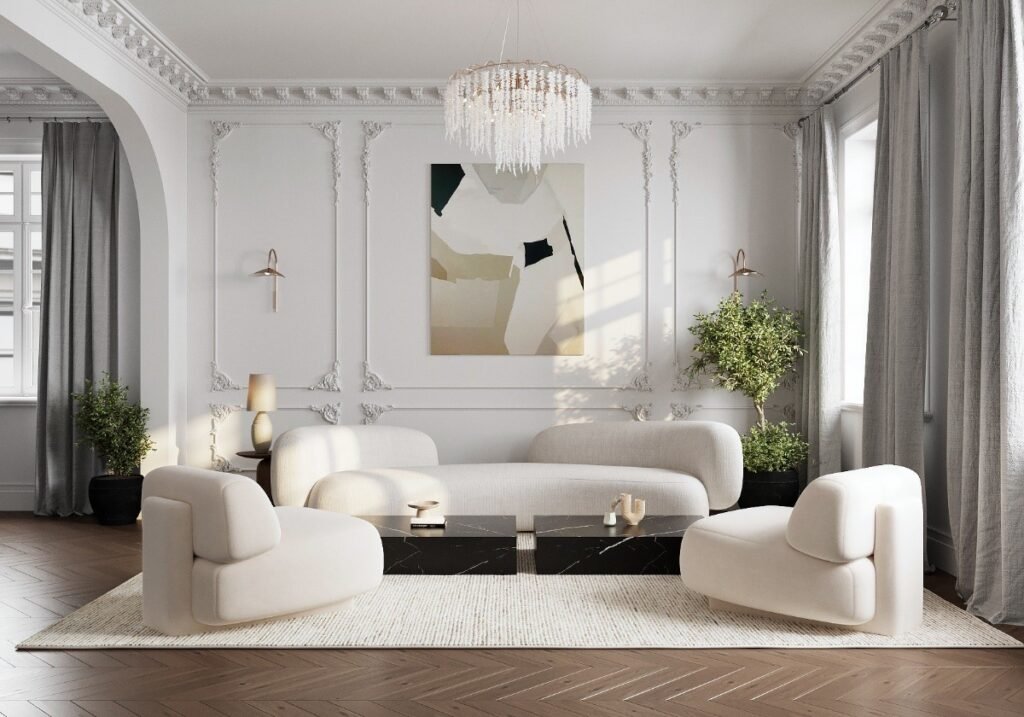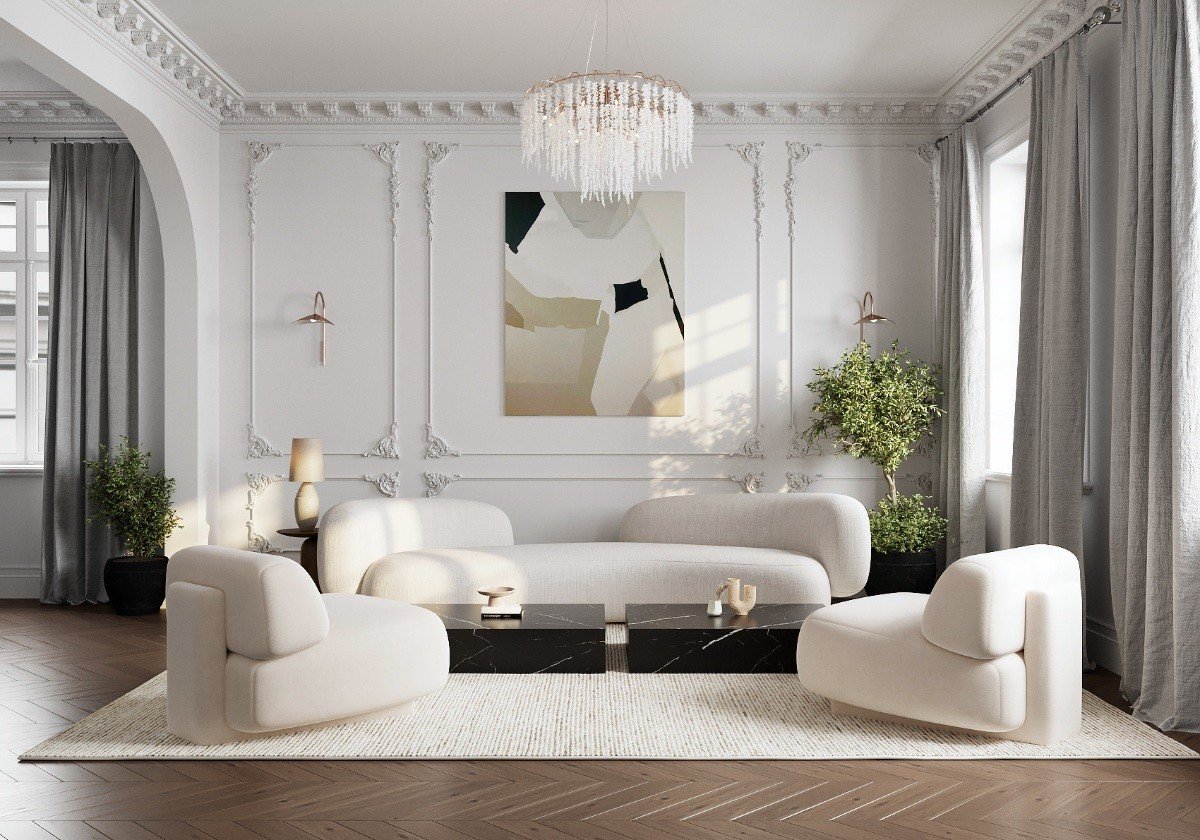Ever walk into an older home and wonder if the electrical system still thinks it’s 1973? Aging homes have character, sure—but they also come with quirks that don’t always align with modern living. As families grow and technology advances, that once-cozy layout or vintage aesthetic can start to feel cramped, outdated, or inefficient. In this blog, we will share how to modernize an older home in ways that respect its bones but bring it up to speed with current needs and standards.

Start With Function, Not Just Finish
Modernizing an older home isn’t about covering the past with a fresh coat of white paint. It’s about making the space work better for how people actually live now. That means rethinking flow, fixing outdated infrastructure, and addressing energy efficiency long before you start shopping for backsplash tile. In a housing market where affordability is tight and supply is limited, more buyers are turning to older homes and updating them rather than competing for new builds. It’s a smart move—but only when done with a plan.
One of the first steps is evaluating where the home is leaking value. In many cases, literally. Poor insulation, single-pane glass, and drafty frames can all make even the most beautiful spaces uncomfortable and expensive to maintain. This is where window replacement becomes a practical—and transformative—upgrade. New windows not only cut energy bills but also reduce noise, block UV damage to interiors, and enhance natural light. For older homes where charm matters, many manufacturers now offer energy-efficient models that preserve classic design details. It’s a clear improvement in both form and function.
Upgrading windows also affects other systems. A tighter seal can improve HVAC performance, stabilize interior temperatures, and reduce reliance on space heaters or noisy box fans. And unlike other renovation projects, the return on investment with windows is consistently strong in both resale and livability. It’s one of the rare home improvements that pays off whether you plan to stay or sell.
Rework the Layout With Intention
Older homes were often designed for a lifestyle that looked very different. Small, boxed-in kitchens, formal dining rooms no one uses, and tiny bathrooms can feel disconnected from how families interact today. Modernization doesn’t mean gutting the soul of the house, but it does mean improving how people move through it.
Open-concept layouts remain popular for good reason—they let in more light, improve sightlines, and make spaces feel larger without adding square footage. However, going full open-plan isn’t always necessary. Strategic edits—like widening doorways, removing non-load-bearing walls, or adding interior windows—can preserve architectural character while improving flow.
Think about how you use your space every day. Where do bottlenecks form? Where does natural light fall short? Where do you find yourself wishing for a counter or a closet or a better place to put a charging station? These pain points guide the renovation process better than any trend ever will.
Modern Systems Make All the Difference
Aging electrical panels, dated plumbing, and inconsistent insulation aren’t just inconvenient—they’re barriers to real comfort and safety. Before you commit to aesthetic changes, bring in professionals to evaluate your home’s infrastructure. The best paint color in the world won’t matter if you’re constantly flipping breakers or avoiding hot showers because your plumbing can’t keep up.
Smart technology also plays a major role in modern home design. Integrating smart thermostats, lighting systems, and security solutions doesn’t require new construction anymore. Most can be installed without tearing apart walls. And these upgrades aren’t just about convenience. They increase energy efficiency, reduce long-term maintenance, and give you better control over your environment—even when you’re away.
But again, smart features need strong foundational systems to support them. Upgrading wiring and improving your home’s electrical capacity will not only allow you to use more tech, but it will also make future upgrades easier.
Preserve What Matters While Updating What Doesn’t
The goal isn’t to erase your home’s history—it’s to carry it forward in a way that suits modern life. That may mean preserving original hardwood floors, restoring old built-ins, or highlighting ceiling beams instead of covering them up. In fact, keeping these elements can add contrast to more modern upgrades and give the home personality in a way new builds sometimes lack.
That said, not everything old is worth saving. Popcorn ceilings, wall-to-wall carpeting from decades past, and linoleum that’s cracked and curling can all go. These removals don’t strip a house of character. They let it breathe. When you pair classic details with clean lines and functional upgrades, the result feels both timeless and current.
In many older homes, lighting design is an afterthought. Swapping in recessed lighting, updating fixtures, and reworking outlet placement dramatically changes how rooms feel and function. And unlike other improvements, lighting updates are relatively affordable while making a huge visual difference. To elevate the refreshed space, consider adding a timeless hand painted oil on canvas painting. It brings classic charm together with contemporary design and adds warmth and authenticity to your walls.
Prioritize What You Can’t Easily Fix Later
Some projects are better tackled early. Poor grading, drainage issues, or foundation cracks can lead to far bigger problems if ignored. Modernizing an older home means thinking long-term. Start with the things that protect the structure, then move inward to the things that improve how you use it.
If the home has a basement, address moisture and insulation before turning it into living space. If the attic is unfinished, consider upgrading the ventilation and insulation while you still have easy access. Once walls go up, those changes get more expensive—and disruptive—to make.
Modernization isn’t about flash. It’s about giving your home a longer, healthier life. When you prioritize structural fixes and system upgrades first, the cosmetic updates are easier to enjoy—and less likely to be undone by a leak or code violation.
Plan, Phase, and Adapt
Most people don’t renovate an entire house at once. And they shouldn’t have to. Modernizing an older home can be a phased approach, especially if you’re living in it during the work. The key is to make a plan that works with your time, budget, and tolerance for dust.
Start with the changes that will save you money or prevent damage, then move on to areas that improve daily living. Bedrooms, bathrooms, and the kitchen often follow. And somewhere in between, build in a little breathing room for the inevitable surprise—because old homes never fail to hide one or two.
Flexibility is part of the process. Sometimes what seems like a cosmetic change reveals a deeper issue. Other times, a project you thought would take months comes together smoothly. Either way, expect your renovation timeline to shift and build in more patience than you think you’ll need.
Modernizing an older home isn’t about erasing its age—it’s about refining it. You’re taking a structure built for a different era and helping it thrive in this one. When done right, the result isn’t just a better home. It’s a space that tells your story, solves your real-life problems, and still has room to grow.








